Photo
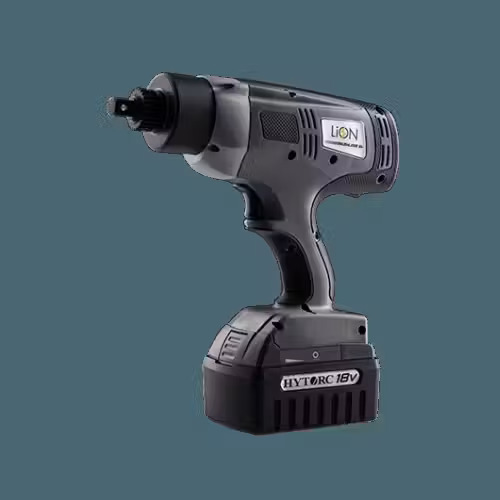
Electric
The most modern line of bolting torque wrenches are HYTORC’s electric torque wrench that offer data recording, dual speed and several other features that provide convenience, accountability and improved productivity.
0 notes
Photo
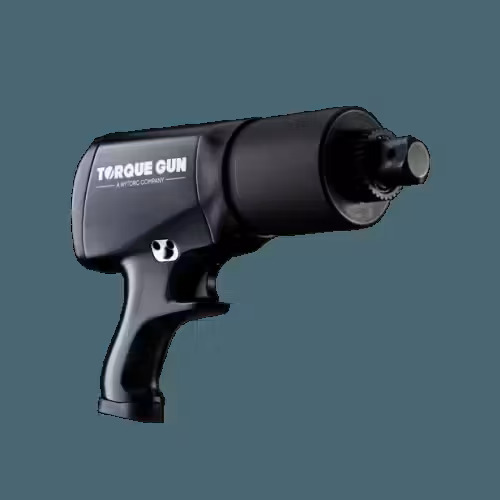
Pneumatic
HYTORC’s jGun series pneumatic torque wrench offers Industry-leading technology and reliability. With the convenience of being powered by air, the series offer easy solutions for industrial shutdown and maintenance.
0 notes
Photo

Hydraulic
HYTORC offers the most-developed hydraulic torque wrenches that offer unique patented benefits to provide industry-leading accuracy and safety.
0 notes
Text
Options for Flange Facing and How to Select One
Together with flange material and class, other crucial factors to take into account when choosing flanges include the facing type and finish. Your piping system might not fulfill the minimum criteria and experience leakage or failure if it lacks the proper face type and related alternatives. What impact do facing finish and type have on the functionality of flanges? For additional information, read this article on different flange facing kinds.

What Are the Most Common Flange Facing Types?
Raised Face Flange
The most typical style of flange facing is called raised face (RF), which has a gasket seating region that is raised significantly above the flange face—typically, by 1/16 inch for 300 flanges and Class 150 and by 1/4 inch for Class 400 to 2500 flanges. By reducing the surface space where the flange and the gasket touch, the raised face strengthens the seal. By biting into the gasket when tension is applied, the jagged flange face surface creates a tight seal.
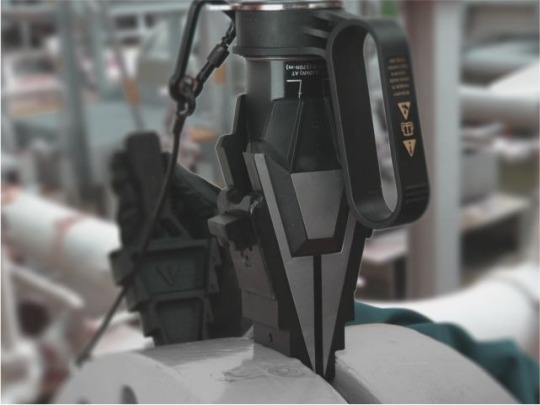
Flat Face Flange
Because there is no ridge on the mating cover of flat face (FF) flanges and they are machined flat, the gasket makes full contact. Flat face flanges are typically utilized for applications involving relatively moderate pressures and low temperatures, typically for 150 to 300 psi rated flanges.
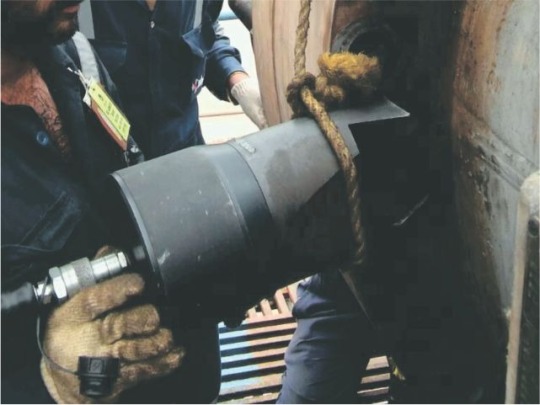
Ring-Type Joint
.The Ring Type Joint flanges are frequently employed in high pressure (higher rating and Class 600) and high temperature assistance above 427°C or 800°F applications. Their faces have been carved with grooves that house steel ring gaskets. When bolts are tightened, the gasket between the flanges is compressed into the grooves and deformed (or "coined") such that metal touches metal is sealed when the grooves are filled with the gasket.
Raised Face height
With the exception of the Lap Joint flange, it is critical to comprehend and keep in mind the following when calculating the height measures H and B of any dimensions of flanges presented on this website.
The raised face is roughly 1.6 mm (1/16 inch) high in tension classes 300 and 150. The H and B measurements, including the increased face height, are displayed in practically every flange supplier's catalo or brochure for these two pressure classes.
How to Choose the Appropriate Flange Facing.
While purchasing pipe flanges, connecting flanges need to be compatible. Flange face kinds should complement one another, for example, raised to raised and flat to flat. Pipe flange materials need to coordinate as well, coupling steel with steel or stainless steel with stainless steel. Moreover, the flange face needs to adhere to the application's specifications, such as AWWA or ANSI.
How to choose flange options
Here is how to choose flange options :
1. You must first become familiar with the bolting service procedures for your flange. The key challenge in this situation is to pick the appropriate flange rather than just relying on a raised face or flat face configuration slip-on as a default. It will ensure that you are able to keep your pipeline assembly from needing to undergo a hard renovation.
2. To safeguard your connections, you must research and pinpoint the important information about your flange. You may find and choose the appropriate flange material and shape for your bolting service in this manner. When you fully understand the media that is passing through your pipeline or vessel, you will eventually find it.
3. The next step is to decide which alloy type is best for your project. You must decide which material qualities you want as the majority of these goods frequently use a variety of materials. You can choose from fibrous flange, elastomeric, metallic, and non-metallic kinds.
4. The following step is to assess the flanges that will be installed in terms of their requirements for corrosion and chemical resistance. After your consideration of the materials, you must also comprehend the levels of chemical resistance that each alloy offers. It assures that you will follow the exact application requirements as necessary to meet the demands of your project.
5. Make sure to locate a specialist who can give you the best advice. By doing this, you can increase the functionality and safety of your flange options assembly. An experienced expert will provide you the details you require and work closely with you to apply the optimum fitting in the appropriate bolting service. You may check the performance of your whole assembly in a reliable manner by carrying out proper testing and reviewing your design calculations.
6. Choosing the right manufacturer is the next step. Choose the most dependable, renowned, and skilled manufacturer to give you the best flange you're looking for.
Conclusion
You should carefully evaluate your piping system's flange facing and finish. In addition to taking standards into account when choosing your flange features, finish, and flange face, select your flange facing based on your temperature-pressure requirements.
Content Sources: - ABSGroup
0 notes
Text
How to choose the right electric assembly tools
There is no production line without the appropriate assembling tools. Your employees' ability to put the pieces together into a finished product is ultimately dependent upon the tools. Nevertheless, because every product is unique, every factory is unique, and because there are a vast array of tool alternatives, choosing the appropriate equipment is not always simple. How can you choose which ones will work best for the specific requirements of your business?
The ability to search for information—on sports, money, or tools—is just as important as the ability to construct, play, or invest. Knowing where to look is the key to finding the appropriate tools. You'll need to create a list of potential solutions and then eliminate options depending on your preferences. This is a complete guide to selecting the appropriate electric assembly tools for your manufacturing line to assist you.


What can you consider while choosing the right electric assembly tools
Identifying your needs is the first step in selecting the proper collection of assembly equipment. What types of products do you develop? How will they be held together, what kind of fasteners? Do you create a lot of straightforward items or a smaller number of intricate ones?
You can focus your search by knowing the type of fastener you need and the manufacturing rate. Find out the torque requirements for each of your tighteners first. It is advisable to use manual or electric tools when employing small fasteners, which often call for ounce-inches or pound-inches of torque. You will need either pneumatic torque wrench or hand tools if the fasteners required pound-feet of torque.


Next, take into account how rapidly you must construct your products. Power tools, either electric or pneumatic torque wrench, are probably necessary if your operation produces items in volume and each tool must fasten thousands of fasteners or more every day. Hand tools might be more appropriate if your organization produces fewer, more specialized goods and each tool must attach dozens to hundreds of tightening tools each day.
Torque Control
Electric assembly tools' capacity to control torque may be their most crucial feature. The force used to turn a screw's head is called a torque. With too much, the screw or component will break; with too little, it will fall out. Electric torque wrench use internal clutch systems and current manipulation to regulate the amount of torque they apply.
Accuracy
When we discuss accuracy, we're referring to the tool's capability to deliver consistent outcomes at a specific torque setting. The screw joint has an effect on the screwdriver's precision and torque capacity. Accuracy can be impacted by elements like the type of material, the type of joint, and if lubrication is necessary. As a result, precision will differ based on the electric assembly tool. A tool should be chosen after considering the application's requirements for attaching joints.

Speed
The most crucial feature in an electric screwdriver for high-volume manufacturers may be speed. In order to produce more products each hour, quick rundown times might increase revenues. Torque range and accuracy are more important considerations for low-volume, niche manufacturers than speed. The kind of material employed in a fastening application is something else to take into account. For example, you ought to normally work at a slower speed when working with plastic.
Torque Range
Powerful electric assembly tools come in several varieties. Wide torque range electric screwdrivers are more adaptable and can handle more items. They are thus a wise solution for contract producers and other individuals who constantly change their product assignments. Electric screwdrivers have a wider torque range at the low end, which is better for little jobs and fragile fasteners, than at the high end, when torque multipliers, pulse tools, or big hand wrenches are favored. The torque ranges that your screwdrivers must function in can be determined by looking at the torque requirements of your fasteners.
Conclusion
Once you are aware of all the characteristics of the many electric assembly tools that are available, it is time to start researching different producers. The greatest manufacturers will have a track record of success in their field; you may already be familiar with them due to reputation. Additionally, they will be certified to demonstrate that they uphold quality standards. To meet your needs, not simply their quota, their professionals ought to be eager to assist you in finding the appropriate tools. Their service centres ought to be accessible and accommodating, offering upkeep, fixes, or guidance as needed.
Content Sources: - ABSGroup
0 notes
Photo

ICE
The ICE torque wrench is the most advanced hydraulic bolting system which is developed with an experience of 50 years of research and development. Dedicated to industrial bolting, ICE features patented industry-first innovations.
0 notes
Photo

MXT
With more than hundred thousand units sold, the MXT model is the best-selling industrial hydraulic torque wrench since 1990. Serving multiple applications in major industries, MXT is the most reliable, durable, and accuracy in the industry.
0 notes
Text
Productivity with Electrical Assembly tools
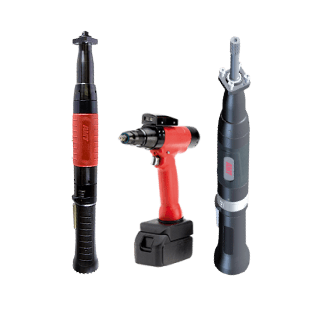
Handheld Nut Runners
A Leading specialist for nutrunner technology. Precise, Intelligent and Energy-efficient systems for safety and quality-critical screw connections.
In the automation industry, AMT develops complex solutions for the automated loading and unloading of machines, as well as their inter-connections.
0 notes
Photo
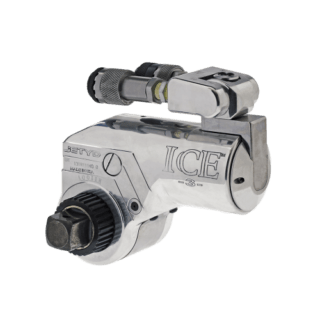
ICE torque wrench
The ICE torque wrench is the most advanced hydraulic bolting system which is developed with an experience of 50 years of research and development. Dedicated to industrial bolting, ICE features patented industry-first innovations.
0 notes
Photo

ISO STANDARDS
Until today, black oxide has been the most common coating used on impact sockets because paint or chromium is not approved by ISO standards. Years of research and testing has proved that ECO LINE, with its light silver hue meets or exceeds all the performance characteristics of previous products.
0 notes
Photo

TOOL LONGEVITY
Other bolting systems put the reaction arm and square drive on opposite sides of the tool causing high stress in the body of the tool, which can lead to failure over time. The HYTORC Washer puts the action and reaction on the square drive axis to eliminate the majority of internal stress, and increase the lifetime of your tools.
0 notes
Photo
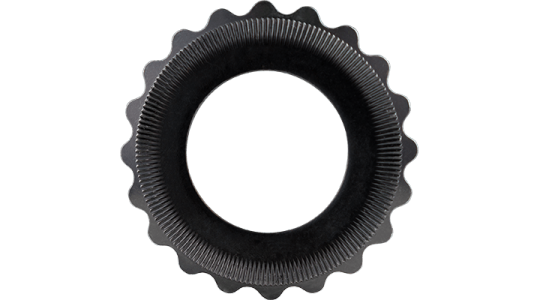
SPEED
The HYTORC Washer removes the complicated setup associated with other bolting systems and makes the bolting process more intuitive for improved job times.
#pipe cutting#pneumatic torque wrench#hydraulic torque wrench#electric torque wrench#battery torque wrench#hydraulic jacks
0 notes
Text
Torque vs Socket Wrench: Which is better?
Torque wrenches and socket wrenches are two common types of wrenches used while operating with bolts and nuts. The uses, advantages, and disadvantages of each wrench are unique. If you don't know enough about these tools, picking one out of them can be challenging. When comparing torque and socket wrenches, which is superior? In order to assist you choose which bolting tool is ideal for your work, we will compare the torque and socket wrench in this article. For more information, let's examine each wrench separately.

Basic Use Of Torque Wrench
A torque wrench is a tool utilized to apply torque and usually acts as a torque limiter. These devices enable torque-driven machinery, such as torque screwdrivers, to convert input torque to torque output.
The equipment is employed to ensure that the transmission of torque is carried out consistently and that, to within a specific margin of accuracy, the applied torque is equal to the needed one.

Basic Use Of Socket Wrench
A socket wrench features an internal mechanism for spinning around its axis to tighten or loosen nuts or bolts by exerting rotational force at a right angle to the axis (torsion). Ratchet head and handle are its two component pieces.
You can loosen or fasten screws utilizing this bolting tool without utilizing a different hand-operated rotating instrument, such as spanners or wrenches. Additionally, some socket wrenches have longer sockets that enable them to reach deeper into spaces without needing to be held by the person using the torque wrench.
Price
It costs more to buy a torque wrench than a socket wrench. An affordable socket set can be purchased at your neighborhood hardware store or internet merchant, while a torque wrench will cost you between $200 and $400.
Calibrate
A socket wrench must be calibrated by the user, whereas a torque wrench is commonly calibrated at the factory. This is another difference between the two types of wrenches. In comparison to a socket wrench, a torque wrench is more likely to produce accurate results.
Tightening Speed
Because torque wrenches have predetermined torque settings that enable them to turn quickly without endangering delicate components like nuts and bolts, tightening screws with them typically takes less time. It takes longer to tighten screws using socket wrenches because you have to apply more torque.
Because they don't need a lot of torque and can do simple jobs quickly, socket wrenches are excellent for moving quickly. With the use of torque wrenches, you can simply modify the torque settings to prevent damage to delicate components, such as nuts and bolts, during tightening.
If you require the extra control provided by torque wrenches but still desire the speed advantages of socket wrenches, you may also select a socket wrench with an adjustable torque multiplier or torque setting.
The best course of action is to get both instruments so that they are each uniquely specialized. This will save you time by completing your work fast while avoiding harm from over tightening small parts like nuts and bolts on machinery.
Precision and Functionality
The socket wrench performs better when it comes to usefulness when adjusting screws or nuts that don't demand a lot of torque. You can manually turn it either clockwise or anticlockwise.
It is best for precision work to utilize a torque wrench, which is typically used to tighten screws or bolts to a specified amount of tension to prevent destruction or make sure that the screw operates perfectly.
Durability
The socket wrench is more resistant to wear and tear than the torque wrench. Because they are constructed of chrome vanadium or steel, socket wrenches are robust and long-lasting. The use of aluminum in the construction of torque wrenches, on the other hand, renders them more vulnerable to damage.
Overall, a torque wrench is a better option for completing jobs quickly and accurately. But if you need a more robust and user-friendly bolting tool for everyday tasks, a socket wrench is preferable.

Power and Torque
For stronger screws or bolts, a torque wrench is the best tool because it can deliver a higher preset torque to the fasteners. The torque wrench has greater strength and can produce more torque than the socket wrench.
Comfort
With their many features, torque wrenches can help you finish your task quickly and comfortably. When working long hours, comfort is of utmost importance. In comparison to a socket wrench, the torque wrench provides you with better comfort. However, using the incorrect size and kind of wrenches might wear down your hand excessively.
Conclusion
When a bolt needs to be tightly torqued with the utmost accuracy, torque wrenches are ideal. While offering a wider range of sizes and uses, socket wrenches are more adaptable. Knowing which kind of wrench to use for a project might be essential. As long as you don't need extreme accuracy, socket wrenches are fantastic!
Content Sources :- ABSGroup
0 notes
Text
Unique features and uses of digital torque wrenches
Wrenching down every bolt or nut as tightly as you can, whether you're working on a bike, automobile, or anything else, is a prescription for disaster. Fasteners are frequently thought to have to be as tight as possible. But this could lead to a whole host of issues. Many of these aren't meant to be tightened all the way. Parts may lock up, fail, become out of alignment, suffer damage, and other problems if they are overtightened.

So how can you tell when a nut or bolt is sufficiently tight? Fortunately, a digital torque wrench is the ideal instrument for the job. There are many different kinds of torque wrenches, and each one is better suited for different tasks. This article will examine the unique features and use of digital torque wrenches which are essential bolting tools to enhance the bolt tightening process in production or manufacturing line.

Unique Features of a Digital Torque Wrench
If you want ease and efficiency, digital wrenches are your best bet. Given that they are pre-calibrated, they are extremely accurate. A setting can be saved for future use or you can add more pre-set torque settings.
As soon as you reach the desired torque level, a notification system lets you know. A buzzer, a vibration, a light indicator, or a buzz are all examples of notifications. Alternatively, it might be a mix of a few of these systems.
A digital wrench's drawback is price, as they are some of the most expensive tools available. To avoid losing any pre-calibration settings, you may require to zero out the settings in some models.
Differentiating from a conventional torque tool, a digital torque wrench has special features. It's critical to be aware of these qualities before purchasing so you can determine which digital torque is the best option for your requirements. They consist of the following:
A real-time digital display that indicates the amount of torque being applied.
Having the option to set the desired torque level will enable the digital torque wrench to click once it is reached.
An LED light source that illuminates the area you're working in to increase visibility.
You can save your most used settings using the built-in memory function.
Several digital torque wrenches have USB ports that you can use to connect to your PC and get data.
A timer may be included in some digital torque wrenches. When using fasteners that must be fastened for a specific amount of time, the timer can be useful. To prevent over- or under-tightening a fastener, the timer function can help guarantee that the fastening is tightened for the appropriate period.
Use of digital torque wrench
To make sure that the components of the car are neither over- nor under-tightened, a torque wrench is a specialist tool that is frequently used in automotive maintenance. Digital torque wrenches, which give you a digital display that exhibits the precise amount of torque being utilized, make mechanical jobs simpler and more accurate. Some of these gadgets contain warning indicators that let you know when the target torque has been attained, such as vibrations, sounds, or flashing lights.
Electric torque wrenches are precalibrated. Some enable you to program various torque levels so you can rapidly go from one common duty to another by pressing a button. Top electronic torque wrenches have been rated for effectiveness, quality, and overall value.
How Does The Digital Torque Wrench Work?
Electric torque wrenches work quite same to standard socket wrenches. Nonetheless, a digital torque wrench differs from its external and from the way it acts internally. So, digital wrenches and socket wrenches operate the similar functions. However, digital wrenches provide the system with the very precise torque it requires.
Commercial and industrial settings frequently make use of digital torque wrenches. To deliver correct and effective outcomes for the loose systems, they offer the scale of changeable torque values.
It's simple to use and comprehend how digital torque wrenches work.
Start by setting the internal digital gauge to the desired torque value. It enables the internal beam and spring to give the system the required torque value.
Then, to tighten the screws, fasten the wrench head to the bolt or other necessary system and turn the wrench in a clockwise direction.
How much-rotating force is delivered to the bolt and how much is required is determined with the aid of the digital system of electric screws.
The mechanism alerts the technician to halt tightening by sending digital signals when the necessary force is given to it.
Because standard wrenches cannot give the system the proper torque, it is frequently employed in businesses. If you lose eye contact with the system, they can also cause injury.
Conclusion
For anyone seeking precision and accuracy, digital torque wrenches are a great option because they are simple to use, accurate, and can be programmed to specific torque settings. They also feature built-in memory. Considering the criteria for the fastening application will help you choose the right torque wrench.
Content Sources :- ABSGroup
0 notes
Text
Bolt Torqueing VS Bolt Tensioning, Which Is Better?
There are two methods for changing a bolt's tension: torquing and bolt tensioning. Bolts are tightened and loosened using torque, which is the capacity to apply rotational force. Bolt tensioning refers to the tightening of the bolt's nut against the bolt's head. By tightening it, you increase the bolt's rigidity and stop it from slipping while you're using it. The size of the bolt typically affects how a torque wrench is used, but bolt tensioners can be utilised with practically any size of bolt. Read the article to know which one is better between bolt tensioning and bolt torquing.
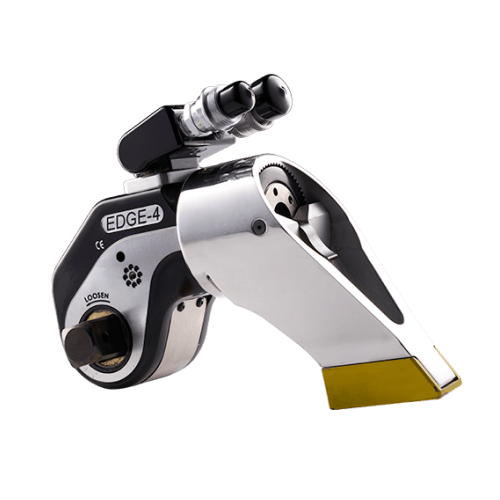
Torque
The stud or bolt need to be tightened to a certain load. By rotating the nut, you can stretch. The thread's angle of inclination causes the nut to revolve on the clamped component's surface. The degree of friction between the component surface and the nut grows to a specified level as the clamping load increases.
Main feature
Cheaper
More versatile
More widely used
Typically utilised for fasteners, bolts and joints to achieve optimum integrity
Accuracy is lessened compared to hydraulic bolt tensioning
Torque has a greater cost-effectiveness than tensioning, which is its main benefit. The success and precision of torque tightening, however, are largely dependent on the user's level of expertise with the torque wrench.
The k factor is also essential for obtaining the optimum torque and tension relationship. (Note: The friction coefficient and the k-factor are not the same.) To determine how much torque must be delivered, the proper k-factor must be known. Along with these factors, you also need to take into account the bolt diameter and the friction of the bearing surface.
Additionally, the torque can also be extremely precise with practice. The tension is more precise.
Tools used to measure torque are typically accurate to within 30%. The actual bolt load of your fastener ranges from 35 KSI to 65 KSI if your desired load is 50 KSI. A rather straightforward method is torque.
The torque accuracy can be considerably greater than 30% when the assemblers are properly taught, there is adequate lubrication, and the k factor is calculated correctly (based on experiments). Getting an accuracy of +/- 15%, for instance, is straightforward for a skilled assembler.
Tension
Stretching the stud or bolt to a specific load is the goal of tensioning. By applying pressure, stretch the handle.
The hydraulic cylinder's pushing or pulling force accomplishes this. After that, you can manually tighten the nut with a torque wrench, only needing a minimal amount of rotational effort. For the tensioning cylinder to be connected and removed after use, there must be some more threads above the nut.
Main feature:
Most frequently applied on big bolts
Typically more costly than other methods
Extremely precise
Dependable and simple to control
Unlike torque, tension does not exert a torsion force on fasteners. Bolt tensioners are primarily utilised with rotating machinery like long threaded bolts and reciprocating rods. For large diameter bolts, tensioning has an additional benefit. Large-diameter bolts may be tightened more effectively
Tension measurements are accurate within 10%. Your fastener's actual bolt load ranges from 45 to 55 KSI if the desired pressure is 50 KSI. Torque wrench is simpler and cheaper; tensioning is both. In order to use a bolt tensioner, skilled employees are needed.
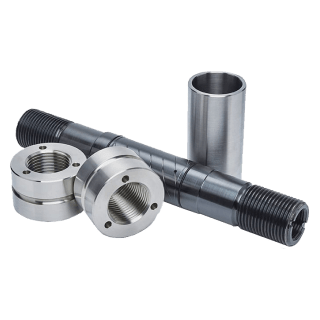
Torquing is adaptable, flexible and more affordable. Making your choice only based on price would be incorrect, though. It can be expensive to resolve a problem with a crucial flange joint in the future.
More precision is provided via bolt tensioners. They are more complicated, frequently more expensive, and faster. Remember that some joints may require to be tensioned gradually if the space between the studs is small. A suitable bolting design should be employed in that situation
Why Go for ABS Group Services?
Our team of more than 150 highly trained specialists, who have been industry leaders for almost 2 decades, has provided bolt tensioning services and other on-site machining services to various renowned organizations.
Content Sources :- ABSGroup
0 notes
Text
Ways to Prevent Bolt Loosening
Bolts are routinely utilized as a fixture tool, but with time, they can lead to serious issues like loose connections, insufficient gripping force, and bolt rust. It may become loose during the processing and fabrication of a part as a result of repeated vibration, significant effects, and even heat. Processing efficiency and quality will be impacted. When these two get loose, it is only inevitable that the machinery or piece of equipment will collapse. Some loose bolts render the nuts utterly useless. It is also possible that one loose bolt will cause all the other bolts to come free. Let’s read the article to learn 12 techniques to stop bolt loosening:
Steps to Prevent Loose Bolts
Because loosening of bolts occurs so frequently, an amazing variety of technologies have been developed to stop them. Here are five fundamental categories of preventative strategies:
Stop gasket
When the nut is securely tightened, the locking process is completed by bending the double-ear or single-ear stop washer to the nut side or connection, as appropriate. A double-lock washer can be utilized to lock the two bolts together if it's necessary to break the two nuts against one another.
Spring washer
The threaded connection pair between the bolt and the nut must maintain a frictional force in order for the nut to not loosen. This is accomplished by the spring washer's anti-loosening principle, which states that once the spring washer is flattened, it will produce a continuous elastic force. Both the connected part and the surface of the bolt have sharp edges at the spring washer's opening that are simultaneously embedded in each. This prevents the bolt from rotating with respect to the connected part.
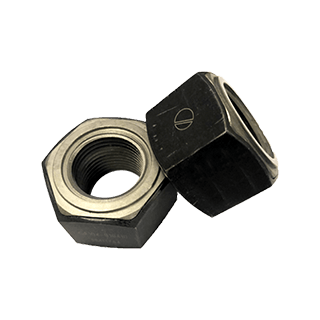
Hot melt fastening technology
The automotive sector frequently uses hot-melt fastening technology because it connects components without the need for pre-drilled holes by tapping directly under the closed profile. With the help of the central tightening shaft of the apparatus, the high-speed motor rotation is transferred to the plastic deformation caused by the heat produced by friction between the sheets that require to be attached in this hot-melt fastening technology. This is followed by self-tapping and screwing.
Six processes are involved in the hot-melt fastening process: rotation (heating), penetration, through-hole drilling, tapping, screwing, and tightening.

Discolored bolts
To be more specific, this type of induction bolt is referred to as a smart color-changing bolt and is termed a Smartbolt. The induction bolt features an induction disc on the bolt head, and the darker the color, the harder you tighten it. When the strength hits 90%, it turns from green or yellow, and when it reaches 100%, it turns black.
Mechanical devices
To secure a tightened nut on a bolted joint, many ingenious tricks have been invented. Castellated nuts are used with a wire or cotter pin that goes through a gap drilled in the fastening tool and have a slotted end. Locking fastener systems consist of a clip that slides into a hole on the fastening tools' head and a flat, shaped retainer that resembles a washer. Tab washers contain teeth that can pierce the joint's surface to hold it in place and two tabs on opposite sides that fold up to lock the bolt head or nut after installation. Despite the fact that these devices stop the nut from coming off the bolt, they typically do not aid in keeping the joint at the required clamp force.
Mechanical devices like torque wrench and bolt tensioners are majorly used to achieve high precision joint integrity and leakage free bolts. Torque wrenches and bolt tensioners are precision tools that can be used to accurately measure the amount of force applied to a bolt. These tools are especially useful in applications where achieving the correct bolt tension is critical for proper functioning and safety, such as in automotive or aerospace industries. Torque wrenches measure the amount of torque or rotational force applied to a bolt, while bolt tensioners apply a specific amount of tension to a bolt using hydraulic pressure. By using these tools, the risk of over or under-tightening a bolt can be minimized, and the desired bolt tension can be achieved with high precision, ensuring proper joint integrity and preventing bolt loosening.
Adhesives
In order to prevent bolts from coming loose in specific applications, liquid adhesives, heated thermoplastic coatings, and solid adhesive patches have all been utilized effectively. They complicate future joint disassembly, which is the issue.
Double Nuts
Not a new nut shape, but simply using two nuts in place of one is another variety of nuts that aids in long-lasting tightening.
To do this, use two nuts—one thick and one thin—each with a different size thread on the dual-threaded fastening tools that advances at a separate rate. The bolts will rarely have an impact on the other because there are two distinct mating threads that go in the opposite direction.
Use torque nuts
The aim behind torque nuts is to improve the friction that keeps the bolt from unfasten by incorporating nylon or metal into the nuts. Attaching a spring within the nut to address the frequent shaking a bolt experiences over the course of its lifetime is another torque-related solution.
Final Thoughts
There are always going to be some bolts keeping a complicated mechanical device patched up and sturdy. Bolts serve this purpose and must be appropriately tightened in order to do so. These bolts will eventually start to loosen and lose their friction, though. Therefore, please do your best to stop the bolts from loosing in the first place and ensure that everything remains as it should be so that they do not all fall out and entirely ruin the machine.
Content Sources :- ABSGroup
0 notes
Photo

Ratchet Reversing Lever
The ratchet reversing lever conveniently and quickly changes the ratcheting direction. It has three positions: clockwise, anti-clockwise, and locked.
0 notes